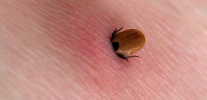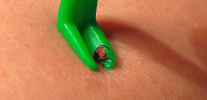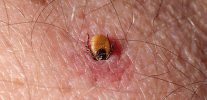
For people who often go to nature, as well as for dog breeders, a convenient device for removing ticks is a very useful thing. And although there is no urgent need for such a device (an experienced person can do without it, simply removing the parasite that has sucked in it with its fingers), but practice shows that removing a tick with a special extractor is much safer, more convenient and less painful than with bare hands.
In addition, there are cases when, in the absence of a twisting tool, removing a tick with improvised means can be quite problematic. For example, when the tick is very shallow, it is deeply stared, and the fingers of a person are large and with short nails, which do not allow the parasite to be grabbed carefully enough to safely pull it out.
Considering the fact that the extractor-binders are rather inexpensive, easy to use, compact (easily fit both in a woman’s handbag, and on a key chain or even in a purse), it is always useful to have such a device at hand in the warm season.
Next, we will talk about how to choose for yourself the most convenient and effective tick twisting machine - consider what they are and how to use them properly, so that with minimal risk to your health you can take the parasite from the skin ...
Types of mite extractors and their classification
All extractors for removing ticks, regardless of their design, work according to a similar principle: the parasite that has already sucked is hooked so that the force applied then falls at the place of junction of the tick head with the body. Rotational movements (and for some types of devices - light loosening movements) lead to the displacement of the mouth apparatus of the parasite in the skin, along with the “case” of hardened saliva, which reduces the strength of its fixation. After 2-3 turns (or a brief loosening), a further pulling motion leads to the successful extraction of the tick.

Most importantly: when using this method, it is extremely unlikely that the head of the tick or its proboscis will remain in the skin. It should be borne in mind that if the whole gnatosome or head remains in the wound, this will further lead to inflammation and suppuration, and also increases the risk of infection with tick-borne encephalitis and borreliosis if the parasite is infected (this is one of the dangers that simple pulling parasite fingers). Actually, in order to prevent this from happening, special tools are used.
On a note
In addition, it was noted that if the tick is simply pulled out of the skin with the fingers, then a large hard lump often forms at the bite site, which disappears, at best, after a few days. If the tick on time and gently unscrew, such a bump usually does not appear. This is due to the fact that when the parasite is extracted with fingers, a person inevitably presses on his body, which causes squeezing out additional portions of saliva (sometimes infected) under the skin.
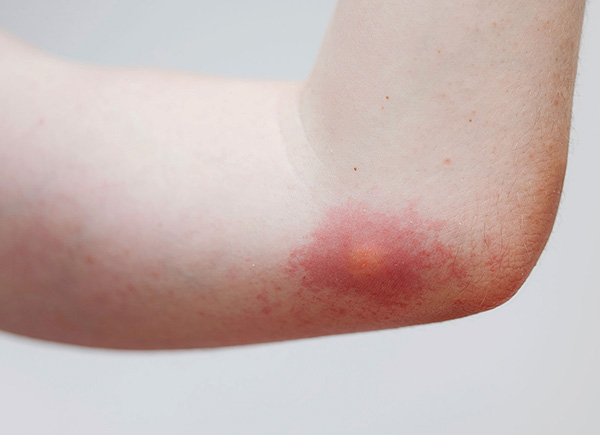
There is no clear classification of devices for extracting ticks, but they can be divided into several types according to the shape and design features:
- Extractors in the form of hooks, in which the lower part is flattened and a groove is made in it. In fact, they look like miniature plastic nail pullers, in which the groove serves as an element of gripping the tick, and the handle is the part that allows you to rotate the tool and conveniently hold it in your hands while removing the parasite. This is one of the most convenient to use devices, because with their help you can quickly remove ticks of any size, even from the thick long hair of domestic animals;
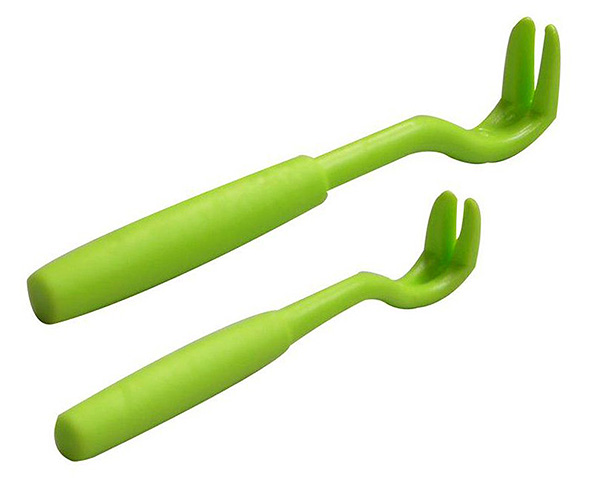
- Flat extractors, in which the holder is in the same plane as the exciting element itself. These include, among other things, extractors-keys. They are convenient in the first place because they are very compact and can be carried even in a wallet. But this same flat form also creates certain inconveniences when extracting a tick: in the thick, long hair of a dog or cat, the parasite can be difficult to hook, and it is not very convenient to rotate the flat extractor-extractor on the skin;
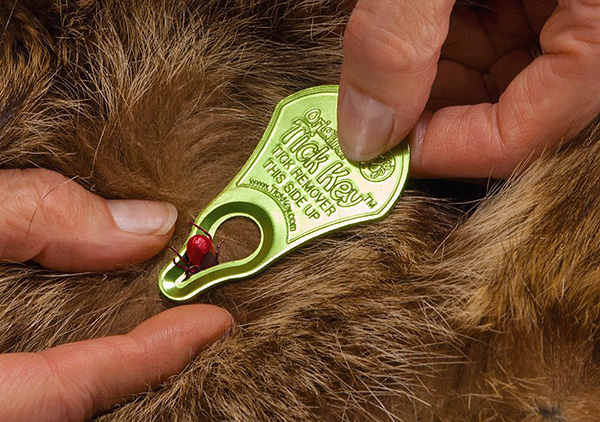
- Special tweezers that differ from previous devices in that they are captured by the tick, like tongs. On the one hand, it is quite convenient, but on the other hand, it is difficult to rotate such a device, since it must be constantly intercepted with your fingers, and when intercepted, you can easily break the correct grip.For this reason, for example, the special Nippes tweezers are of little use for frequent and permanent removal of parasites;
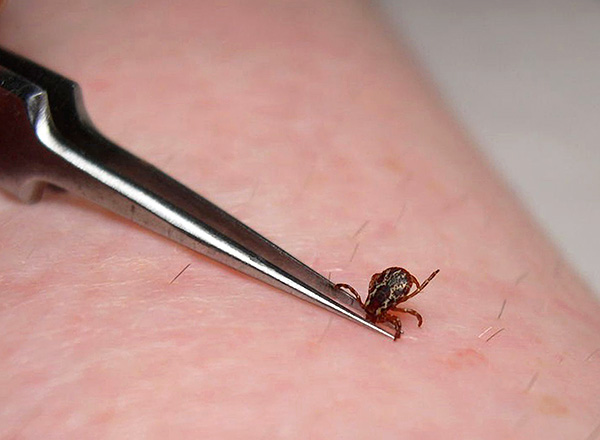
- Loop extractors, in which the fascinating element is a tightening loop of thin wire or fishing line. Often produced in the form of pen-lasso, in place of the ball in which - a small loop. Despite the relative simplicity of the design, such devices are relatively time-consuming to use.

There are also other variants of extractors on sale, which cannot be attributed to any of the above groups due to the originality of their shape. Be that as it may, when choosing a device it is useful to take into account the key features of the design, its advantages and disadvantages - this will allow you to choose the most suitable device.
Basic requirements for such a device
Imagine a situation: you are going to buy a tick removal tool that would be convenient to carry with you on a fishing trip or to take on hiking trips. Let's look at what characteristics of such devices need to pay attention in the first place.
The first is that the device should have an element that will easily provide a tight grip of a tick of any size at the place of its contact with the skin.It should be borne in mind that the size of the parasites, depending on the degree of their saturation, varies from a few millimeters to 1-2 cm. In addition, the gripping element of the extractor must in some way prevent the tick's body from turning in order for the parasite to rotate.
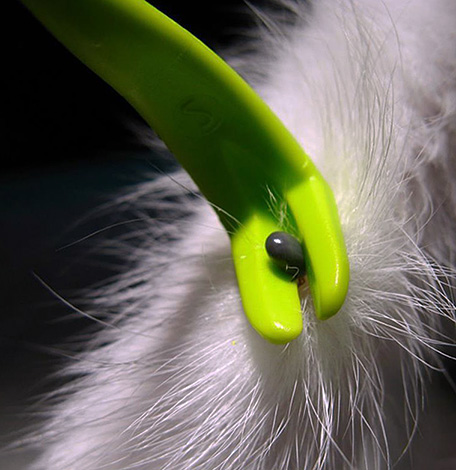
The second is that after the tick's body is captured, ideally, its holding should occur without additional efforts. For example, simple tweezers do not meet this requirement, because to hold the tick, the legs of the tweezers must be constantly squeezed with your fingers. Interception of fingers can lead to unclenching legs of tweezers and their displacement while loosening the grip, and in some cases to subsequent crushing of the parasite.
Third, it is useful to choose a tongsheder that will be easy to use with one hand. This is important, for example, if parasites have to be removed from a resisting dog or cat, holding the pet with one hand. Or if the tick stuck, for example, to the neck or in the armpits of a person, that is, on a site where it is difficult to work with both hands. It is necessary to consider in advance that the procedure will most likely have to be done not at home, but on the street,where the pet will break out and most likely will not lie relaxed, as it is shown in the commercials, demonstrating the convenience of working with extractors.
Fourth - the device should be as simple as possible, without small parts that can easily break, tear, crack or bend. It is desirable that there are no connections and moving parts at all - they are weak points limiting the life of the entire product.
Fifth - the extractor should be convenient not only for unscrewing ticks, but also for carrying with them. It is known that the main problem of such devices is their absence at hand at the right time. Such an instrument is more often forgotten at home than it is taken with you on a hike or for a walk. Therefore, in the ideal case, the dealer must easily fit into a pocket, purse or driver's license cover, or it should be conveniently hung on a bunch of keys as a keychain, so that he is with him wherever he goes.
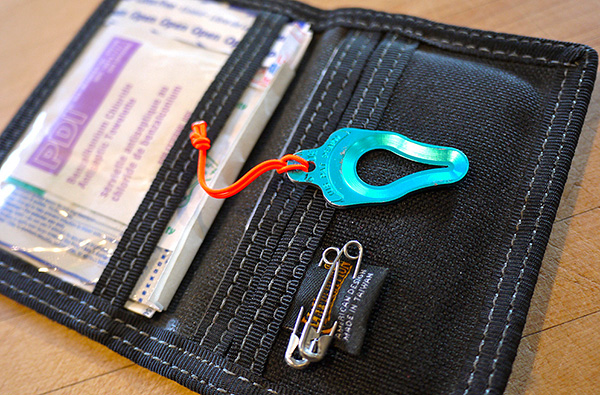
On a note
Understanding how the device should remove the tick, it can be made from improvised means independently. For example, in the simplest case, a full-fledged extractor is made per minute from a dry stick with a knife.It is even easier to use the thread from which the loop is made, but then pulling the tick with such thread can be a bit more complicated than a home-made tickweaver made of a stick.
Hook extractor
Pincers in the form of solid hooks with a groove at the end are considered the most convenient and therefore are often sold in pharmacies and online stores.

They meet all the above requirements for tick removal devices and have several important advantages over other devices:
- They are great for twisting ticks;
- They are easy to work with one hand;
- Hooks allow you to remove ticks even from the long and thick hair of a dog or cat;
- It is convenient to carry them in a bundle with keys, in a hiking belt or in a first-aid kit, in small pockets. Some manufacturers make and sell such extractors in special cases that have convenient fastenings on the belt or on the pocket;
- Such a hook has a simple construction and is extremely reliable, there is literally nothing to break.
On a note
Interestingly, many models of these tools are released in sets with hooks of two sizes - large and small.Large is needed to extract large, already pumped blood from adult females, and small - to unscrew small nymphs and males (males drink significantly less blood than females).
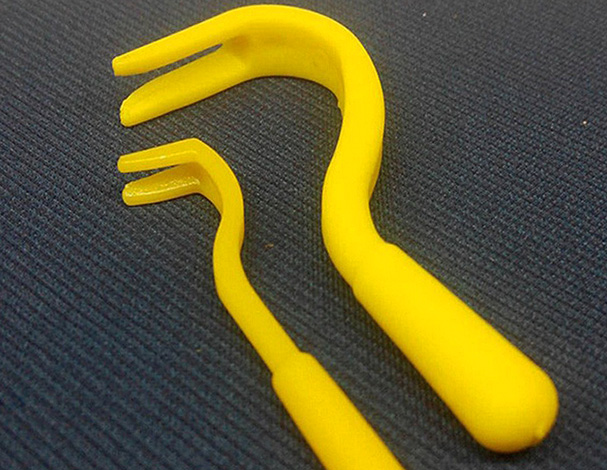
The principle of operation of such hooks is the following: with a flat end, the pincer be hooked so that the slot seizes its body in the area of articulation with the head. Then the handle rotates with two fingers, due to which the tick also starts to rotate, and after 2-3 turns it drops out of the skin.
Examples of such hooks for removing ticks:
- Uniclean Tick Twister tick twister (Tick Twister, France) is a classic version of the pincer that can be bought in two sizes at once. The disadvantages of this model are the absence of a hole for attachment as a keychain and the absence of an accumulation chamber into which the tick will fall and from which it is convenient to shake it into the jar to deliver to the laboratory for diagnosing tick-borne encephalitis virus infection or Lyme disease. Two hooks in a package cost about 150 rubles in Moscow;
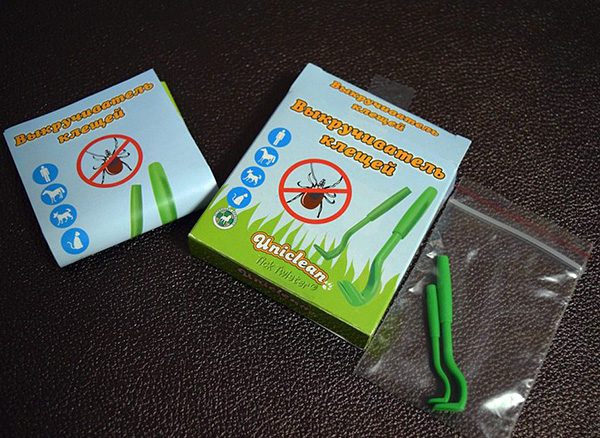
- Trixie Tick Remover (Germany) is a slightly more “advanced” version of the tick extractor. Firstly, the device is smaller (its length is 6.5 cm), and secondly,it has a hole and a ring for attaching to a bunch of keys; thirdly, it has a deep chute over the exciting element, in which a tick is taken out and from which it is convenient to shake the parasite into any container in order to save it for further investigation. Sold in one size, suitable for removing ticks with a body length of 0.4 to 1.5 cm. Price - about 100 rubles;
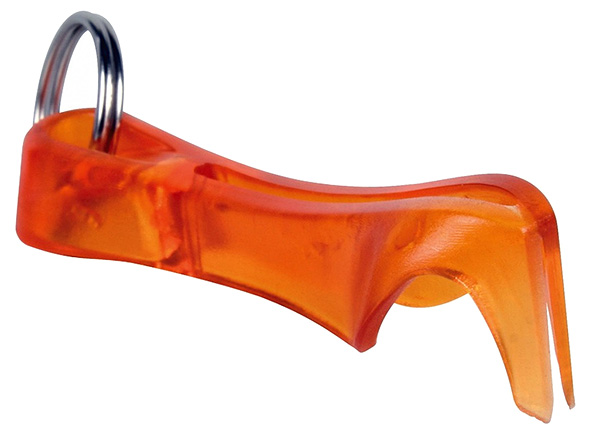
- Ticks remover Rolf Club 3D (Russia) - in the package there are products of two sizes (for removing small and large individuals). Interestingly, on the handle of each device, there are small bumps that prevent it from slipping during rotation with your fingers. A set of two extractors can be bought for about 150 rubles;


On a note
Judging by the reviews, the lack of all devices of this type is the difficulty of extracting ticks from the animal’s ears, as well as between the fingers of people, that is, where there is no place to rotate the bottom of the hook.
Also available are devices in the form of medical probes, forked at the end. They look quite presentable, but impractical because of the large weight and the danger posed by a sharp fork.

Such devices are suitable for veterinary clinics, since they are convenient to disinfect with other metal tools.
"Spoon" to extract ticks
Spoon or spatula is a kind of transitional variant between hooks and flat extractors. Outwardly, such a device really looks like a small plastic spoon, in the scoop of which a slot is made. This slit captures the body of the tick, after which, holding the handle, the tool must be rotated around the axis of the parasite's body. After 2-3 revolutions, the tick remains in the spoon.
The photo below shows the device for removing ticked off ticks (USA):
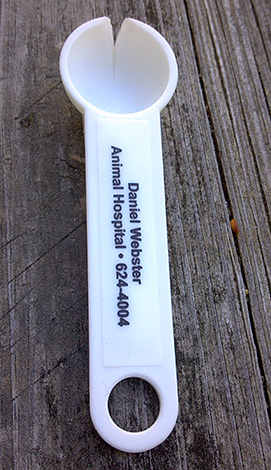
There are no significant advantages of such devices over hooks. But there are drawbacks - the specific shape of the spoon somewhat complicates the extraction of the tick from the skin: you need to twist the spoon around the place of attachment of the tick, and this requires a lot of free space (while the same hook could simply be scrolled between fingers). For this reason, it is inconvenient to remove ticks not only from the ears, but also from the armpits and from the thick coat of animals with a spoon.
Otherwise, such shoulder blades are good: they are comfortable to wear on a keychain or on a dog's collar, they are reliable and they have practically nothing to break.
Lasso pen
This device differs from the above-described device gripping element. Here the tick is not clamped in the slot, but is captured by a thin loop of wire or fishing line. When you press the cap of the handle, the fishing line slides out and the loop becomes large enough to capture a tick of any degree of saturation.


The loop attaches to the tick, the cap is released and the fishing line is tightened, pressing the tip of the handle to the body of the parasite. After that, the handle is gently rotated between the fingers - its lower end rotates along with the body of the tick and causes it to fall off.
The main advantage of such a device is the ability to use it on hard-to-reach areas of the body of a person or an animal, including in the recesses (on the ear or inside it, between the fingers).
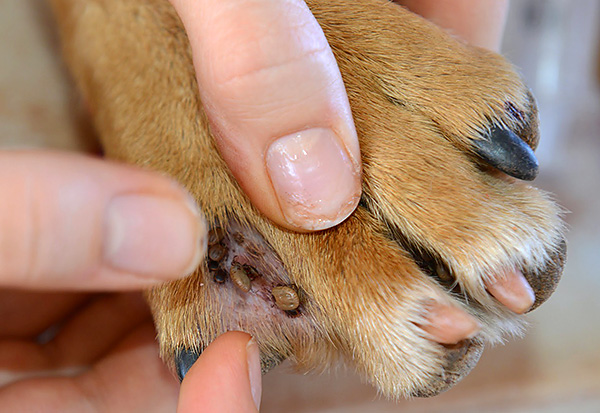
Moreover, with a lasso handle there is less risk of accidentally pulling out a tick without rotation (such a nuisance is sometimes possible due to the rigidity of the lever during awkward movement with a hook or spatula, which has already been tampered with by the parasite, but has not yet begun to rotate).
At the same time, there are drawbacks to the lasso pen:
- It is difficult to capture a tick in thick wool, and the smaller the size of the parasite, the more difficult it will be to capture.In the promotional videos you can see how easily and quickly such a pen twists the parasite, but it should be borne in mind that all such materials show only large, already sucked blood ticks, convenient for extraction. However, nowhere is it shown how to unscrew a small thick nymph with a lasso pen - in practice this is not so easy;
- The handle is not very compact, it does not have a loop that allows you to hang it on a bunch of keys. The only option to carry it - in your pocket or bag;
- In the lasso handle there are moving parts, and it is easier to break it than, say, a hook or spoon.
On sale you can find, for example, Trix Tix Lasso (Sweden), in addition, there are devices that have the name of a syringe lasso. They cost about 150-200 rubles, but many gardeners and dog breeders have learned to make their own hands from ordinary ballpoint pens, from which pasta is removed and the fishing line is attached to the cap (it turns out the so-called Dr. Demkin's pen).
Extractor Key
The special feature of key extractors is that they are flat, due to which the whole device is very compact and comfortable to wear.
For example, the photo below shows the classic Tick Key key player:

It is superimposed on the skin so that the tick is inside the hole, and then slightly shifted to the side to fix the tick with the narrowed part. After such fixation, it is enough to turn the key several times around the parasite so that it falls out.
Obviously, the main advantage of such a device is its compactness and the ability to carry it in a purse, pocket, on a dog leash or on a keychain. The disadvantage is the difficulty (and sometimes the impossibility) of pulling the tick out of the dog’s ear or between the person’s fingers with its help.
The cost of the Tick Key tick remover is about 500 rubles.
A few more flat options
Flat mowers work on the same principle as “keys” and “spoons”.
Here are some examples of such flat tools:
- Pro-Tick (USA) - a device similar to a simple elongated metal plate with a tapered part on one side. It costs about 300 rubles. Can be worn as a keychain;
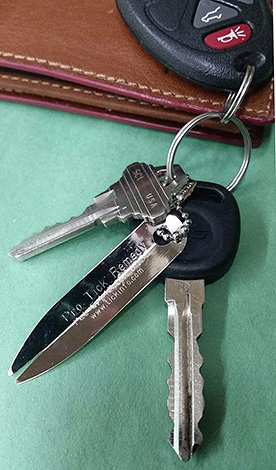
- The Tickminator (Tick Remover Card) is a plastic tongs-keeper, both in size and in shape similar to an ordinary plastic bank card, in which a fascinating part for large ticks is cutthe same is for small ones, and a small magnifying glass is also installed, which allows you to check whether the head has come off the tick. Its cost is about 1000 rubles; .

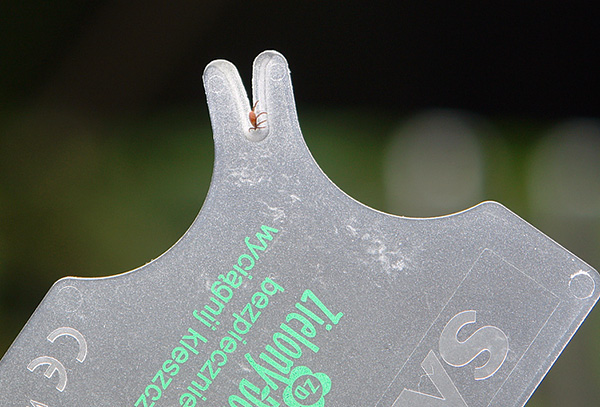
The disadvantages of these tools is that it is not always convenient to rotate them due to some cumbersome design. In part, this drawback is deprived of such a device in the form of a flat metal plate with a slightly curved narrow part:

Tick removal tweezers
Despite the fact that the standard tweezers are not very convenient for safely unscrewing a tick, according to a similar principle, several original tweezers work.
Here are some of the popular fixtures of this kind:
- Trixie Zecken-Zange forceps, Sentry, Tick Remover Tweezers, etc., similar to the handle with tweezers on the end. The main difference between them and tweezers is that in a free state, the gripping ends are tightly compressed, and when the cap is pressed, they unclench. Therefore, to capture the tick, you need to press the cap, start the tips under the parasite and release the cap. After that, the forceps can be rotated by carefully removing the tick;

- Wire tweezers Anti-Tick Russian production. Perhaps the smallest and lightest.However, they are relatively expensive (the price is about 800 rubles) and it is not very convenient to attach them to a bunch of keys or put in a wallet;
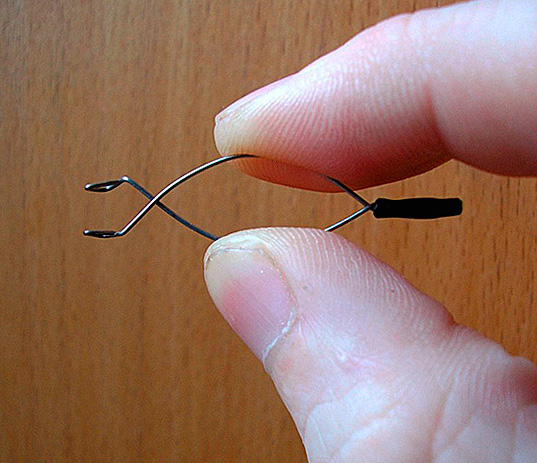
- The Zeken Fix tweezers are a fairly handy device, which, however, is fairly easy to damage, for example, in a hiking trip;
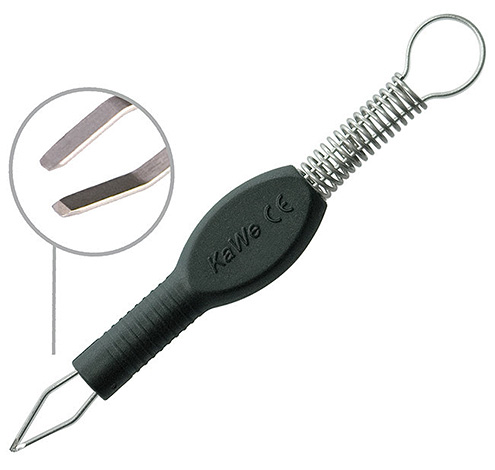
- The already mentioned Nippes tweezers (Nippes, Germany) with long thin tips, which are sometimes used by veterinarians, not only to remove ticks, but also to remove other insects, as well as splinters, ingrown hair and various foreign bodies.
The original Tick Nipper tick remover (USA) can also be attributed to devices of this type, however, it has a rather complicated structure, is expensive and cumbersome, which is why it is not very suitable for carrying around with you, for example, while walking with a dog.
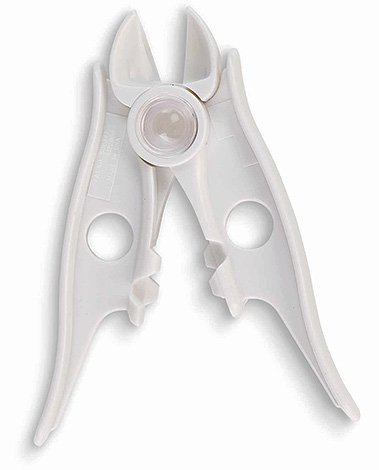
Rules for working with extractor to remove ticks
The main rule of effective and safe extraction of a tick that has already bite into the skin is that the parasite should not be pulled out, but unscrewed. It is during the rotation that the strength of the “cement” case is disturbed between the parasite's proboscis and the skin, after which the tick is easily removed (you can rotate the tick clockwise or against - it does not matter).
Therefore, regardless of the shape of the extractor, when pulling out a tick, you need to act as follows:
- Catch the parasite under the body in the place of its adhesion to the skin;
- Fix it in the device (pull it tightly into the cut on the hook, grab it with a loop or tweezers);
- To begin to rotate the device, so that the tick began to rotate with it;
- After the parasite falls out, treat the wound with a disinfectant (hydrogen peroxide, ethyl alcohol, brilliant green, iodine).
It is important not to try to pull the tick out of the skin even after a few turns. The fact is that when a person rotates with an instrument, at one time or another a person involuntarily tightens the parasite a little. This is enough for it to fall out when the engagement is weakened to the necessary extent. If you constantly try to intentionally pull out a tick, then the risk of tearing its head from the body is high.

In addition, no need to try to somehow loosen the fixation of the mite in the skin, pouring it with oil, alcohol or gasoline. These measures will not have any effect, since the sucked tick will rather die than release its owner to full saturation. That is, neither burns with medical alcohol, nor the lack of oxygen will make him get out on his own or at least “loosen his grip” a little.
If a tick is removed from a person in a region with a high incidence of tick-borne encephalitis, and the victim does not have a corresponding vaccination, then the parasite should be placed in any empty container and taken to a laboratory for research. This is worth doing, even if the tick was crushed and already dead - it is quite suitable for analysis.
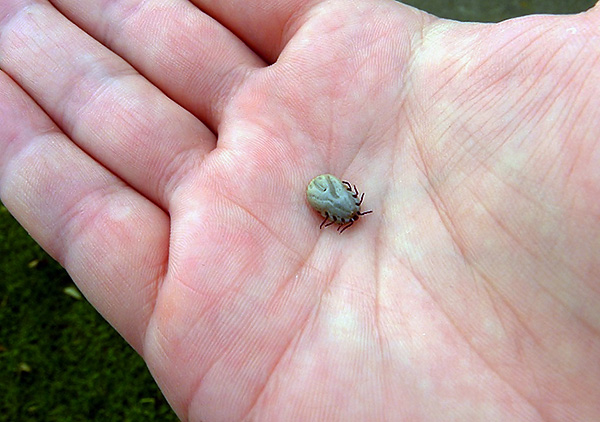
Directly from the laboratory, a bitten person may be sent for an injection for emergency prophylaxis of CE.
If the bite occurred in a region with a low risk of tick-borne encephalitis, or a person has a vaccine against this disease, then the tick can simply be thrown out.
Regardless of the region and the person who was bitten - a person or a pet - after the removal of the tick, you should watch the victim for 2-3 weeks. If he shows signs of indisposition, he should be taken to a doctor for diagnosis as soon as possible, informing him of the bite: ticks can carry various infections (not only tick-borne encephalitis), which are deadly for people and animals, and if infected. infection is important in time to start professional therapy.
What to do if a special device was not at hand
The trouble with many tick extractors is that they are not at hand at the exact moment when they are needed. At a picnic, going to the beach or just walking in the forest, you can pick up a parasite and only then remember that the device stayed at home. What to do in this case?
Tightening the removal of the parasite is not worth it, because the longer it sucks blood, the more it injects saliva into the wound, which can be infected.

If the tick is large, you can try to unscrew it with your fingers. This is especially simple if a person has rather long nails: the parasite either grabs the body, or picks up the nails under it, after which it is gently rotated. After 2-4 turns it usually falls out.
If the tick is very small, then you can simply try to tear it off carefully: the cement case in small nymphs is usually very weak and does not reliably hold them in the skin. Their chances of tearing off their heads are much lower than those of large individuals.
You can also use the tools that will be at hand, or which can be quickly made on the spot from scrap materials. These may be, for example:
- Tweezers from the manicure set, which, though not easy, can unscrew the parasite;
- Simple thread. A loop is made out of it, pounces on the tick, is tightened, and then the ends of the thread are twisted behind each other. Gradually, as the string is tightened, the tick begins to rotate, falling off after a few turns;
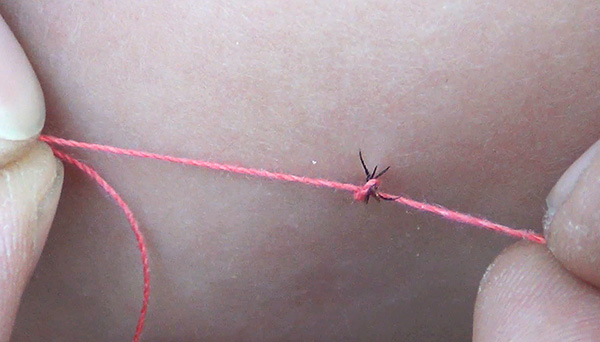
- A simple stick, on which a cut is made from one end to make a flat surface, a recess is made in it, and a kind of flat extractor is obtained.
On a note
It is important to remember that the same cementing case, which forms in the place of skin puncture, does not harden immediately, but within a few hours. This means that a tick that has stuck recently is relatively easy to tear off without the risk of leaving the head in the skin.
What to do if, when a tick is removed in the skin, its head or proboscis remains?
If, however, when removing a tick in the skin, its head or proboscis remains, do not panic. Remove the remnants of the parasite relatively simple simple needle or sharp scissors from the manicure set. It is necessary to process the tool with a disinfectant solution, pry the proboscis (head) of the tick with it and remove it as a splinter. After removal, the wound is also worth being sanitized.
If it is impossible to remove the gnathosome, it is advisable to consult a doctor to remove it. If this is not done, then after 1-2 days the wound fester, and the tick's proboscis can simply be squeezed out with pus. However, this option is undesirable because squeezing pus is painful and is fraught with secondary infection. Therefore, if there is an opportunity, it is better to remove the remnants of the parasite before the suppuration of the wound, even in a medical institution.
A very visual video of the use of the device for removing ticks Uniclean tick twister
And here is an example of the manufacture of homemade ticks

